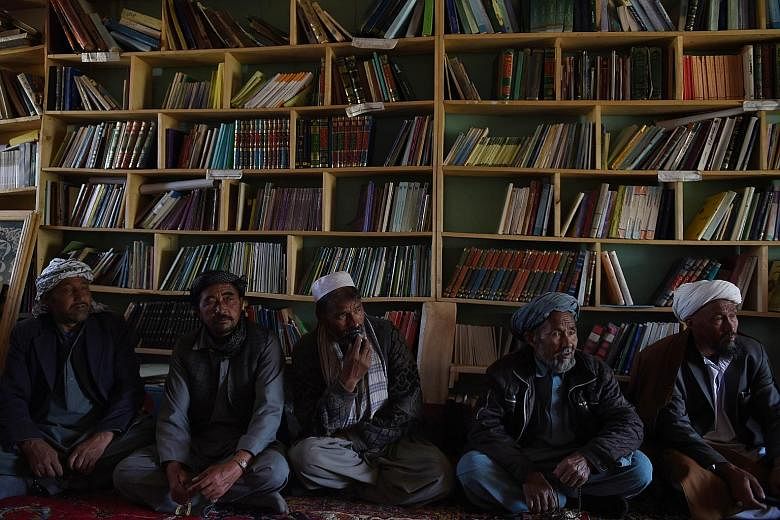HAJIGAK (Afghanistan) • A group of potato farmers sat cross-legged in a school, pensively mulling the assembly of an armed militia to guard Afghanistan's largest iron ore reserve buried in the jagged Hindu Kush ridges flanking their village.
Afghanistan's vast untapped natural resources, valued at more than US$1 trillion (S$1.4 trillion), are seen as the war-battered country's ticket to a self-reliant future, a possible trump card to jumpstart the lagging economy as foreign aid ebbs.
But the lucrative sector - already plagued by rampant corruption, insurgent violence and a lack of regulation, which are all deterring international miners - also threatens to fuel conflict and push Afghanistan deeper into turmoil.
"We are sitting on a fortune which could create cars and planes for the world, and jobs and schools for local people," said Mr Mohammad Reza, 53, twirling his prayer beads. "But this treasure could fall in the wrong hands if militants start infiltrating into Hajigak," added the father of six, sitting among robed farmers in the seminary.
Hajigak, a patchwork of boulder- strewn ridges and wildflower meadows in Bamiyan province, sits atop an estimated 1.8 billion tonnes of iron ore - one of the world's biggest such untapped deposits. Barring occasional incursions by armed nomadic tribesman, this remote region, dominated by minority ethnic Hazaras, enjoys relative tranquillity, despite being hemmed in by insurgency-wracked provinces.
But mining in the area, farmers fear, would inevitably inflame violence that has engulfed other areas of Afghanistan endowed with mineral wealth.
Insurgents, warlords and militias have made murderous incursions into most other areas rich in deposits of iron, gold, copper and precious stones, including Logar and Ghazni in the east and the northern badlands of Badakhshan.
At least 1,200 of Hajigak's farmers, many of them mujahideen fighters during the civil war in the 1990s, have volunteered to mobilise a militia as a bulwark against intruders and illegal excavators.
"Afghanistan is on a resource curse trajectory," said Mr Javed Noorani, a researcher on mining based in Kabul. "There is a real danger that the political conflict could morph into a resource conflict."
Mr Noorani cites a proliferation of criminal syndicates facilitating the cross-border movement of illegally mined gemstones and other resources, including the country's biggest cash crop opium - often in cahoots with insurgents who charge "protection money". He adds: "This shadow economy is expanding the war chests of militant groups and fuelling the conflict."
Mining offers the largest potential for employment and revenue generation in a country heavily reliant on foreign aid, fast dwindling as international troops depart.
President Ashraf Ghani recently quipped that Afghanistan's mining resources were enough to feed the country for 400 years.
But the biggest mining projects worth billions of dollars are mired in delays due to security risks and a lack of technical capacity.
An Indian consortium and a Canadian company which won rights to develop the Hajigak mines in 2011 are yet to begin work at the site. The other big stalled project is the Mes Aynak copper mine south-east of Kabul, which was awarded to the state-owned Metallurgical Corporation of China in 2007.
The Afghan government "lacks the technical capacity to research, award and manage new (mining) contracts without external support", said the Special Inspector- General for Afghanistan Reconstruction, in a scathing report in April.
AGENCE FRANCE-PRESSE

